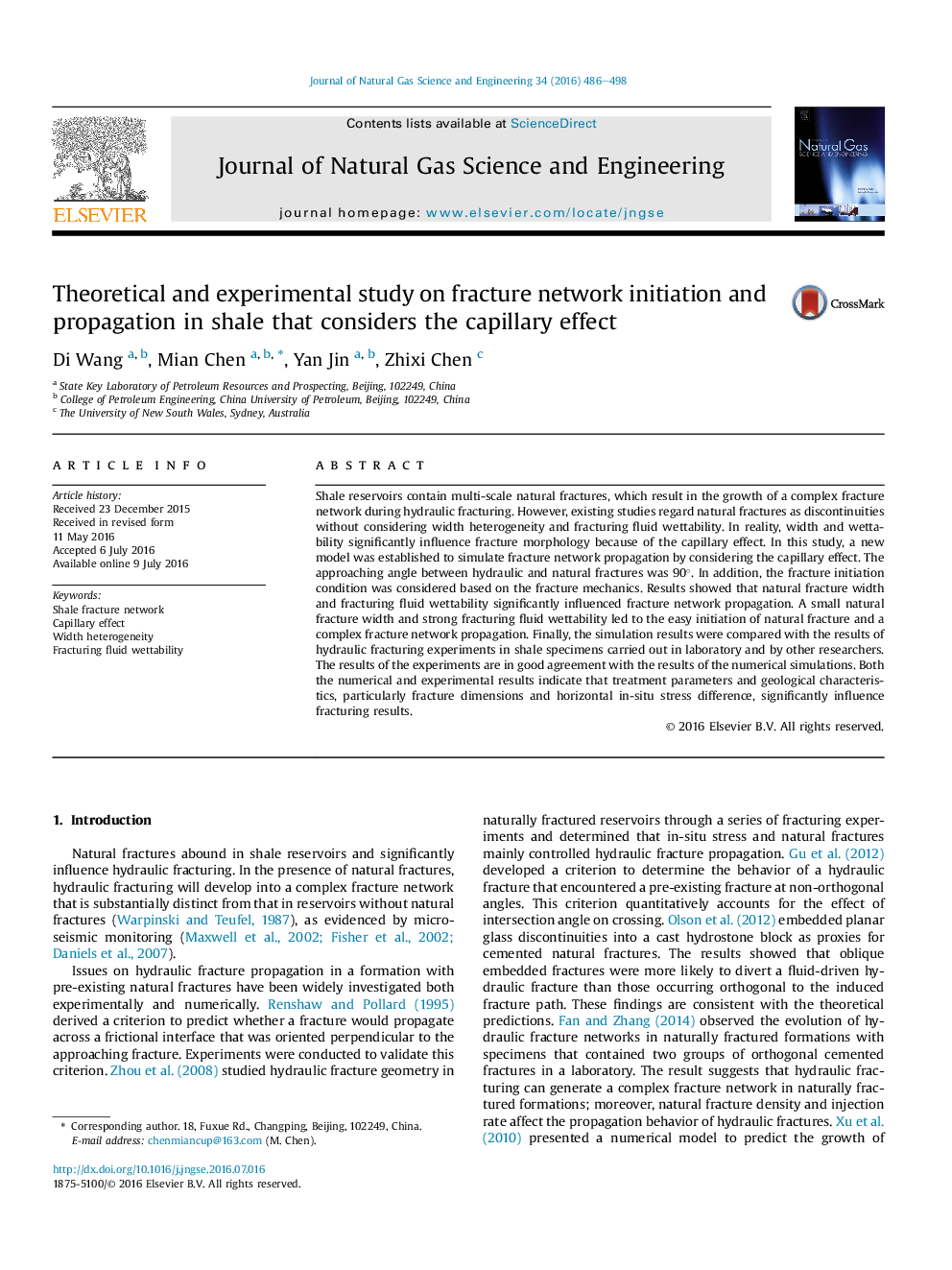| Article ID | Journal | Published Year | Pages | File Type |
|---|---|---|---|---|
| 8128684 | Journal of Natural Gas Science and Engineering | 2016 | 13 Pages |
Abstract
Shale reservoirs contain multi-scale natural fractures, which result in the growth of a complex fracture network during hydraulic fracturing. However, existing studies regard natural fractures as discontinuities without considering width heterogeneity and fracturing fluid wettability. In reality, width and wettability significantly influence fracture morphology because of the capillary effect. In this study, a new model was established to simulate fracture network propagation by considering the capillary effect. The approaching angle between hydraulic and natural fractures was 90°. In addition, the fracture initiation condition was considered based on the fracture mechanics. Results showed that natural fracture width and fracturing fluid wettability significantly influenced fracture network propagation. A small natural fracture width and strong fracturing fluid wettability led to the easy initiation of natural fracture and a complex fracture network propagation. Finally, the simulation results were compared with the results of hydraulic fracturing experiments in shale specimens carried out in laboratory and by other researchers. The results of the experiments are in good agreement with the results of the numerical simulations. Both the numerical and experimental results indicate that treatment parameters and geological characteristics, particularly fracture dimensions and horizontal in-situ stress difference, significantly influence fracturing results.
Keywords
Related Topics
Physical Sciences and Engineering
Earth and Planetary Sciences
Earth and Planetary Sciences (General)
Authors
Di Wang, Mian Chen, Yan Jin, Zhixi Chen,
